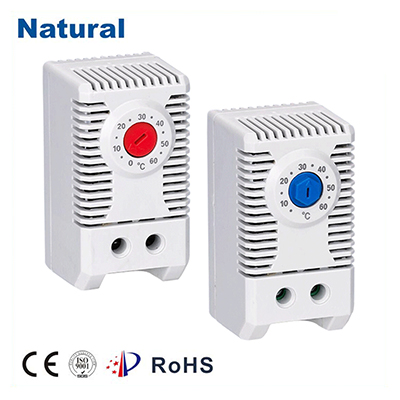In today’s fast-paced world, convenience and efficiency are paramount. One aspect of our daily lives that reflects this sentiment is the way we control the temperature in our homes and workplaces. Gone are the days of manual adjustments to the thermostat throughout the day; instead, we now have the marvel of automatic temperature control thermostats. These devices have revolutionized the way we manage our indoor environments, offering both enhanced comfort and significant energy savings.

The concept of automatic temperature control has been around for quite some time, but recent advancements in technology have made these thermostats smarter and more efficient than ever before. In this article, we will delve into the evolution of automatic temperature control thermostats, exploring their features, benefits, and the positive impact they have on our lives. The Early Days of Thermostats Before the advent of automatic temperature control thermostats, the task of regulating indoor temperatures relied solely on manual thermostats. These thermostats required constant adjustments to maintain a comfortable temperature, leading to potential energy waste and fluctuations in comfort levels. However, they laid the foundation for the development of automatic systems. The Emergence of Programmable Thermostats The next step in the evolution of thermostats was the introduction of programmable thermostats. These devices allowed users to schedule temperature changes throughout the day, making it possible to reduce heating or cooling when it wasn’t needed, such as during working hours or while asleep. This innovation marked a significant improvement in energy efficiency, as it eliminated the need for constant manual adjustments. Smart Thermostats: A Technological Leap Forward The most recent and groundbreaking evolution in temperature control is the advent of smart thermostats. These devices incorporate cutting-edge technology to offer a wide range of features and benefits. Smart thermostats are Wi-Fi-enabled and can be controlled remotely via smartphone apps or voice commands. They use sensors to detect occupancy and adjust the temperature accordingly, ensuring optimal comfort while minimizing energy consumption. One of the standout features of smart thermostats is their ability to learn and adapt to users’ preferences. Over time, they analyze usage patterns and make automatic adjustments to create a tailored and energy-efficient heating and cooling schedule. Some models even consider local weather forecasts to optimize temperature settings, further increasing efficiency. Benefits of Automatic Temperature Control Thermostats Energy Efficiency:Automatic temperature control thermostats help reduce energy consumption by optimizing heating and cooling schedules. This not only lowers utility bills but also benefits the environment by decreasing greenhouse gas emissions. Convenience:The convenience of remote control and automation means you can adjust your home’s temperature from anywhere, ensuring a comfortable environment upon your return. Cost Savings:While the initial cost of a smart thermostat may be higher than traditional thermostats, the long-term savings on energy bills make them a wise investment. Improved Comfort:These thermostats maintain a consistent indoor climate, eliminating temperature fluctuations and hot/cold spots, enhancing your overall comfort. Environmental Impact:By reducing energy consumption, automatic temperature control thermostats contribute to a greener and more sustainable future. Conclusion Automatic temperature control thermostats have come a long way since the days of manual adjustments. They have evolved from simple programmable devices to sophisticated, intelligent systems that enhance our lives in many ways. Their energy efficiency, convenience, cost savings, and comfort benefits make them an essential addition to modern homes and workplaces. As technology continues to advance, we can expect even more innovative features and improved performance from these remarkable devices, further improving our quality of life while reducing our carbon footprint.